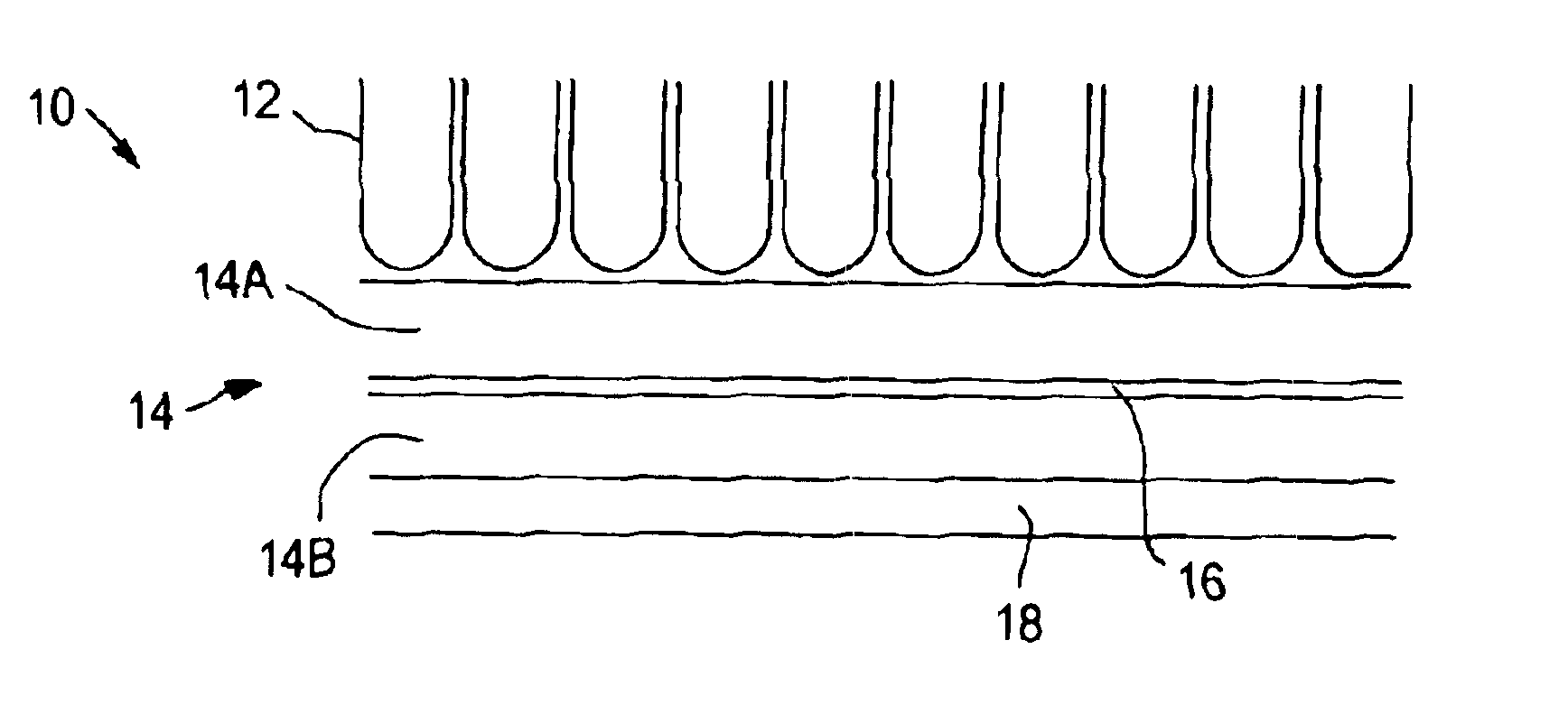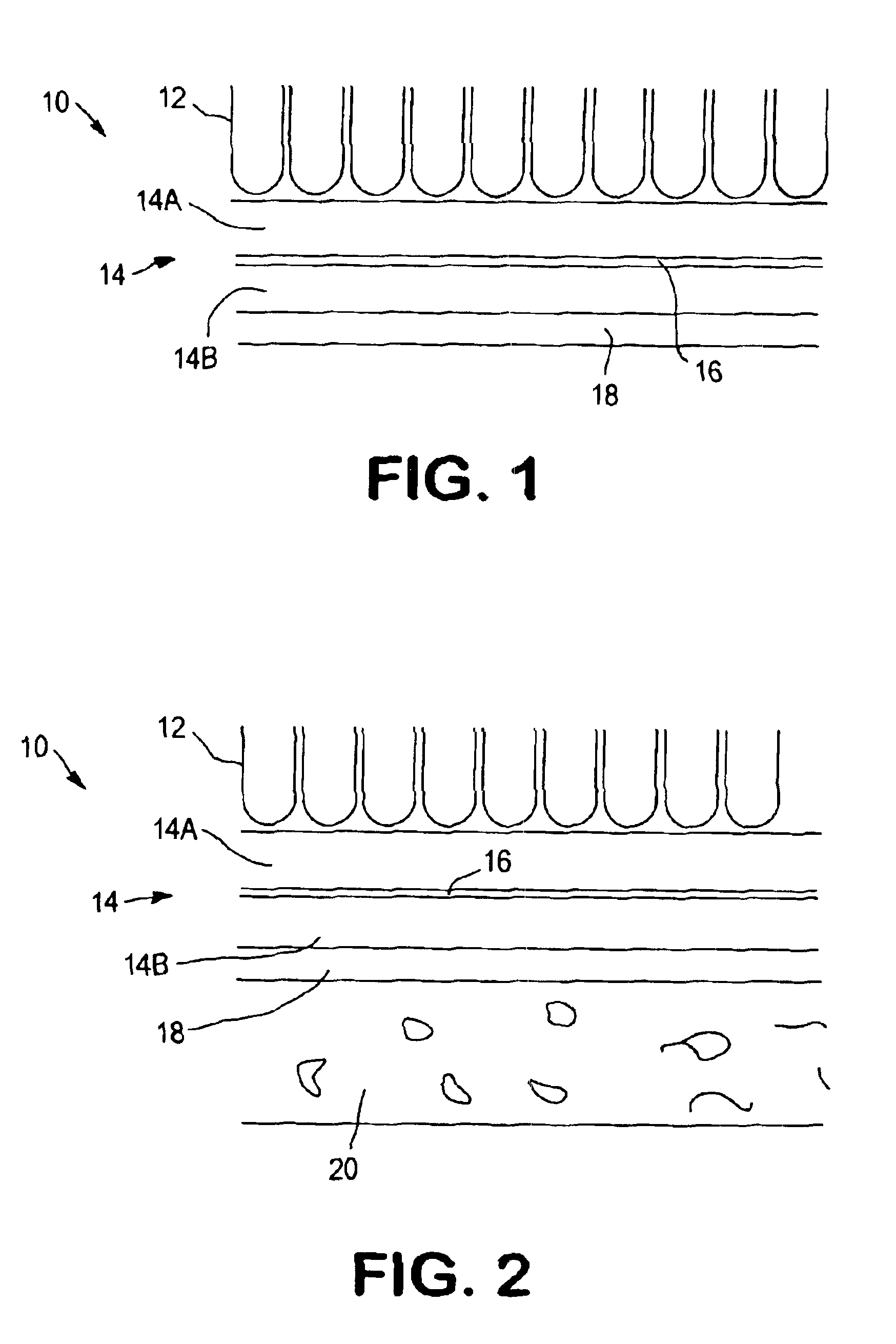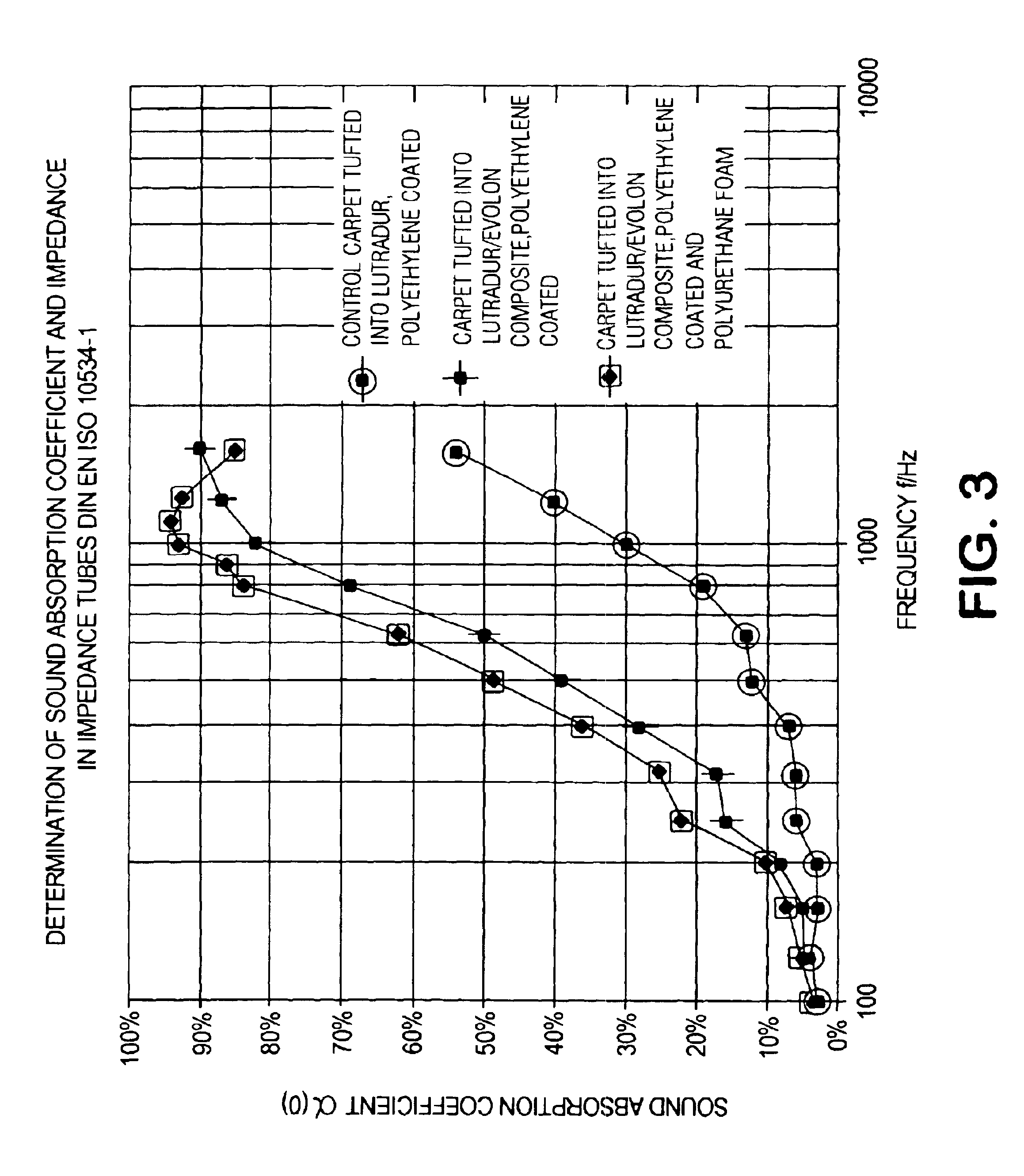Automotive tufted carpet with enhanced acoustical properties
a technology of acoustic properties and tufted carpets, applied in the field of tufted carpets, can solve the problems of heavy jute backing, lack of noise dampening or acoustic properties, and lack of carpet construction
- Summary
- Abstract
- Description
- Claims
- Application Information
AI Technical Summary
Benefits of technology
Problems solved by technology
Method used
Image
Examples
Embodiment Construction
A PB (primary backing) composite was manufactured on a flat belt laminator with a 4 meter heating zone followed by a pair of calendar rolls and a 1 meter long cooling section. It was determined that the best condition for operating was at a speed of 10 meters / minute, a calendar roll pressure of 70 p.s.i. and a top / bottom temperature of 325.degree. F. (160.degree. C.). Following the aforementioned process for forming the primary backing, the backing was tufted with NYLON.RTM. fiber having a denier of 1400 by a COBBLE tufting machine operating at a speed of 850 r.p.m.
The primary backing comprises a 67 inch wide first backing of LUTRADUR.RTM. Style 52 from Freudenberg Nonwoven NA plus a second backing of EVOLON.RTM. Type 011 (100 grams / meter.sup.2) from Freudenberg KG. An adhesive web, Style POX80519G from Spunfab, was used as the adhesive web between the first backing and second backing to thermobond the backings together during the manufacture of the primary backing. The tufted carpe...
PUM
| Property | Measurement | Unit |
|---|---|---|
| melting point | aaaaa | aaaaa |
| temperature | aaaaa | aaaaa |
| temperature | aaaaa | aaaaa |
Abstract
Description
Claims
Application Information
 Login to View More
Login to View More - R&D
- Intellectual Property
- Life Sciences
- Materials
- Tech Scout
- Unparalleled Data Quality
- Higher Quality Content
- 60% Fewer Hallucinations
Browse by: Latest US Patents, China's latest patents, Technical Efficacy Thesaurus, Application Domain, Technology Topic, Popular Technical Reports.
© 2025 PatSnap. All rights reserved.Legal|Privacy policy|Modern Slavery Act Transparency Statement|Sitemap|About US| Contact US: help@patsnap.com



